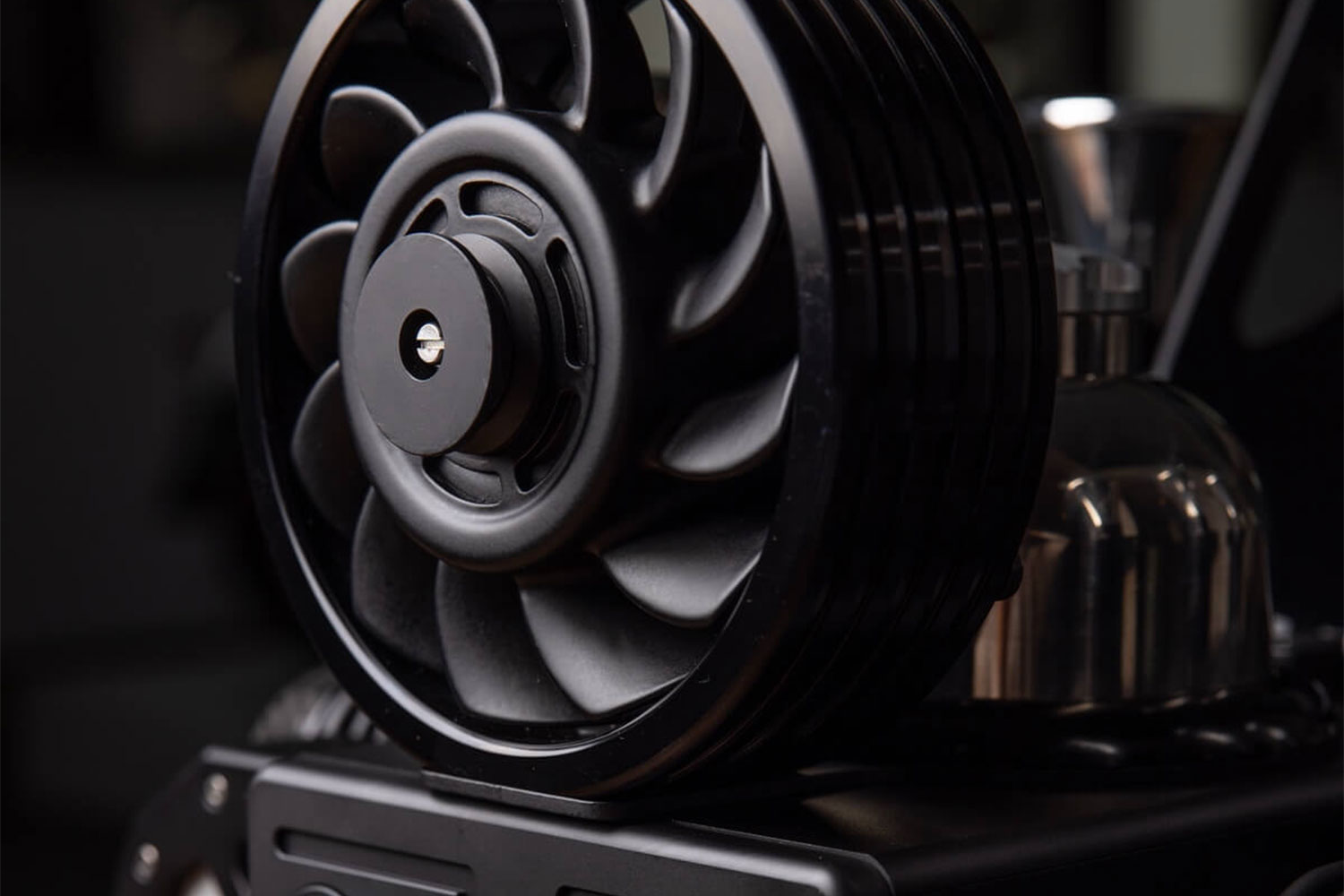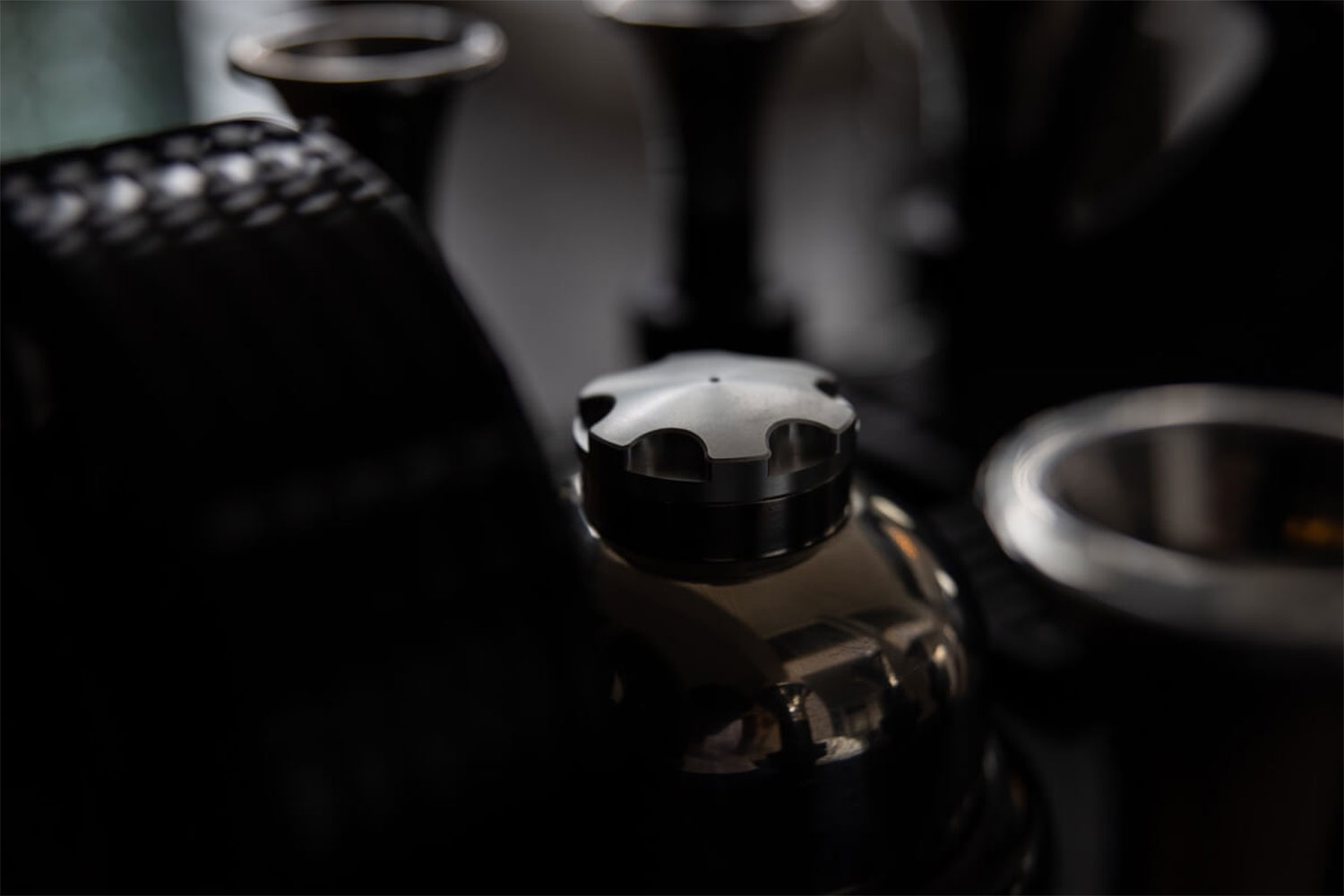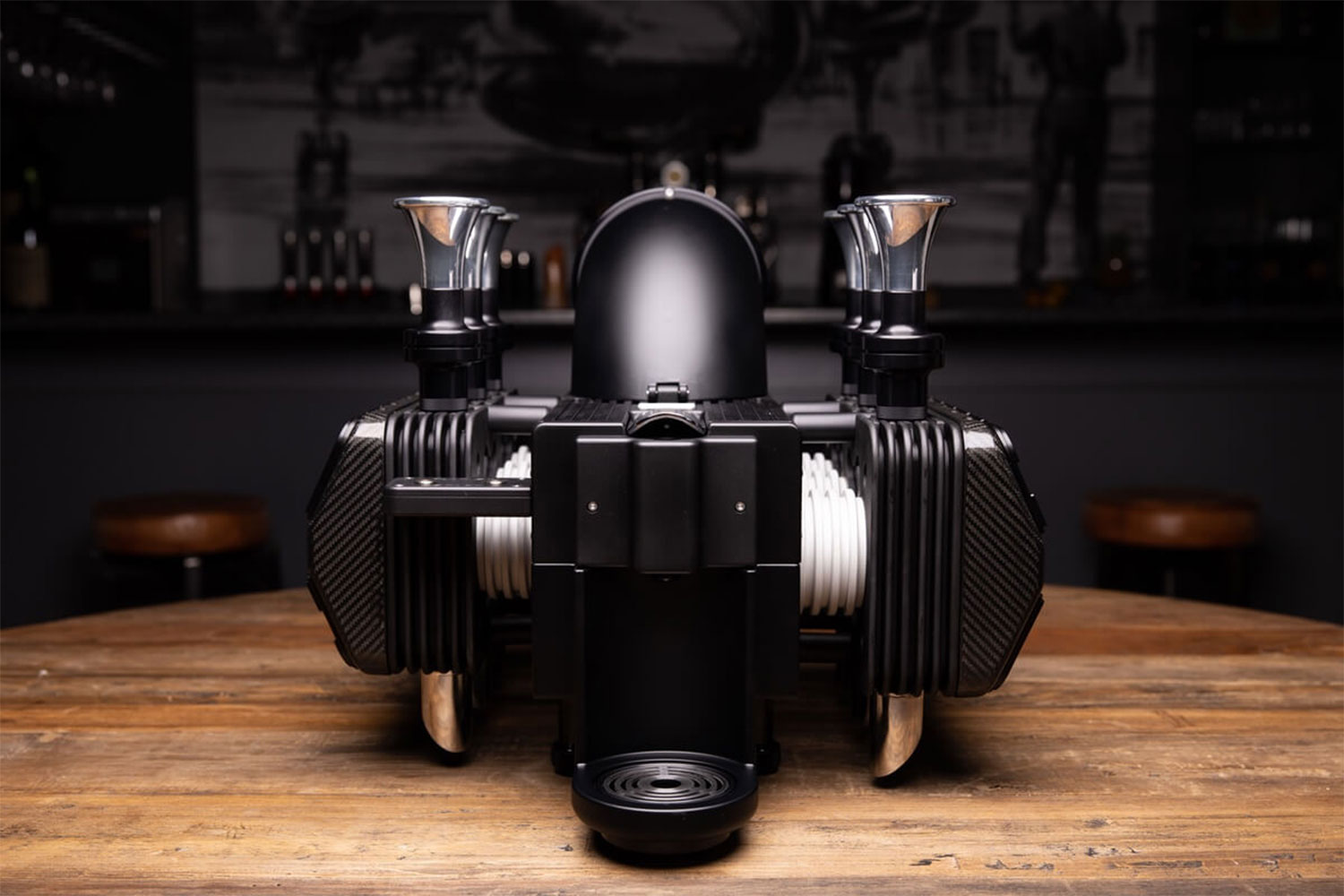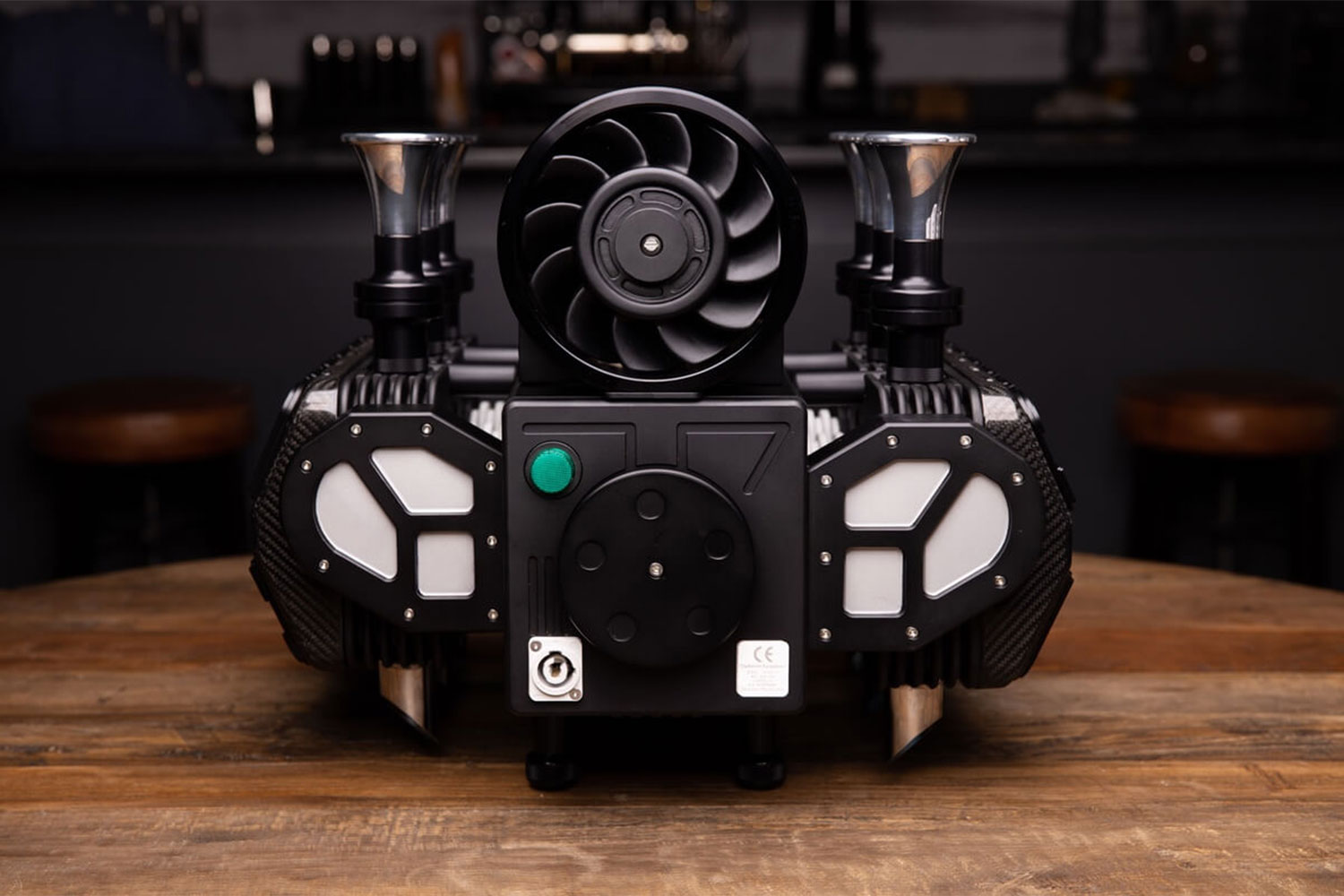We’re all going a bit stir-crazy amid this ongoing pandemic. Some of us are taking up gardening, some have a jam-packed schedule of virtual happy hours, and others are contending with impulse shopping just to pass the time and feel “normal” again. If you fall into that last camp, maybe it’s time to consider a new, uber-luxury espresso maker. Because, frankly, that stimulus check isn’t going to spend itself.
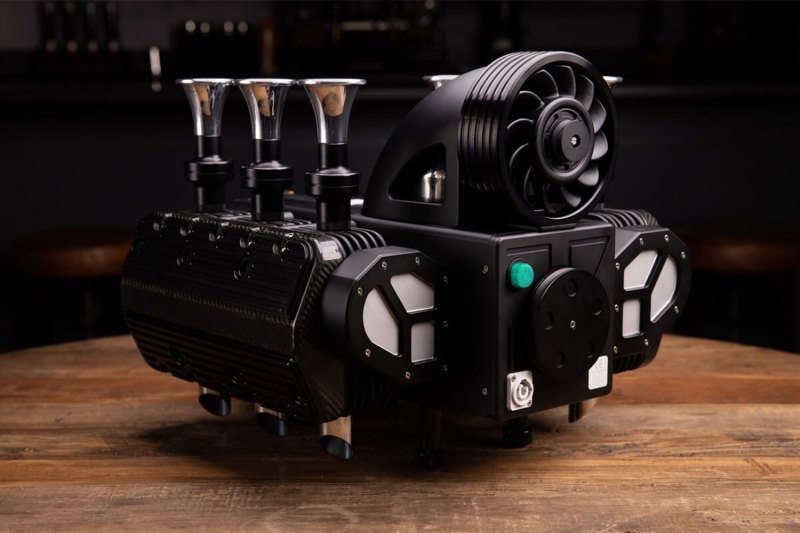
With an aggressive visual upgrade to its Espresso Veloce Flat Six, the Espresso Veloce RS Black Edition is the latest high-end espresso maker from Super Veloce. This is no ordinary Black & Decker drip-brew dispenser. It’s a swanky, world-class coffee maker meticulously handcrafted to resemble one of Porsche’s most legendary race engines. More specifically, Super Veloce confirms the design pays “tribute to the last modern classic 993 air-cooled flat-six engines that were raced competitively.” If you like fast cars and espresso makers, this unexpected hybrid delivers.
It’s a hulking, 47-pound beast that’s equal parts modern art sculpture and functional kitchen appliance. Every component is composed of aerospace-grade materials, including carbon fiber, titanium, aluminum alloy, and surgical-grade steel. From the “engine block” to the “cylinder heads” to the “cam covers,” all are done in a sleek, luxurious jet-black color scheme. Beyond its handsome looks, the Espresso Veloce RS is also a legit, capsule-style espresso maker. Honestly, though, we can’t imagine that’s why anyone is actually buying one. The price? A cool $11,160. Sure, you could almost buy a used Porsche 944 for as much, but can a Porsche fix you a strong cup of espresso?
Super Veloce has carved out a rather curious and lucrative niche for design-savvy one-percenters. The South African company is one of only a few in the world that produce handmade coffee machines inspired by automotive and aviation history. Until now, it’s pulled design influence almost exclusively from jet turbines, Formula 1 racers, and Italian exotics, namely Ferrari. The RS Black Edition is one of its first forays into the German automotive heritage.
The Espresso Veloce RS Black Edition is now available, but you’ll have to act fast. Super Veloce is only producing 993 units. If the sky-high price tag is too rich for your wallet, the “entry-level” Espresso Veloce Flat Six stickers for a mere $10,300.
Coffee not your thing? Check out our other favorite over-the-top luxury products for your home.
